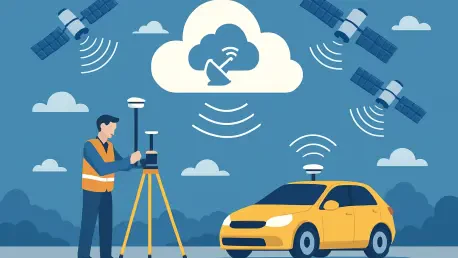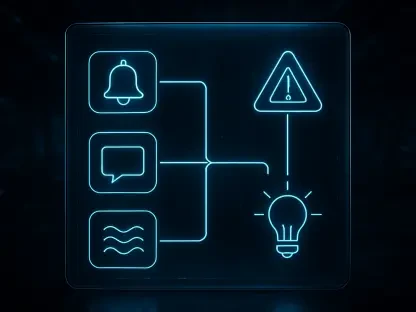Welcome to an exciting conversation about the future of precision positioning technology! Today, I’m thrilled to speak with Vijay Raina, a renowned expert in enterprise SaaS technology and software architecture. With his deep knowledge of innovative tools and systems design, Vijay is the perfect person to guide us through the groundbreaking advancements in cloud-based GNSS solutions like Skylark. In this interview, we’ll explore how this technology achieves unparalleled accuracy, its impact on industries like automotive and robotics, the significance of meeting critical safety standards, and the broader implications for autonomous systems. Let’s dive in!
How does Skylark’s cloud-based precise positioning service stand out from traditional GPS or GNSS systems, and what enables its remarkable centimeter-level accuracy?
Skylark really pushes the boundaries by delivering centimeter-level accuracy, a huge improvement over the 3 to 10 meters you typically get with standard GPS. Traditional GNSS systems often struggle with signal errors caused by atmospheric interference or multipath effects, where signals bounce off buildings or other surfaces. Skylark tackles these issues head-on by using cloud-delivered correction data in real time, which fine-tunes the positioning information. This approach can improve accuracy by up to 100 times, making it a game-changer for applications where every inch matters, like autonomous driving or robotics.
What types of signal errors does Skylark correct, and how does the cloud play a pivotal role in this process?
Skylark corrects a variety of signal errors, including ionospheric and tropospheric delays, which occur when satellite signals pass through the atmosphere, as well as errors from satellite clock drift or orbit inaccuracies. The cloud is central to this because it aggregates vast amounts of data from global reference networks and processes it instantly. This corrected data is then streamed to devices in real time, ensuring they have the most precise location information possible, no matter where they are in the world.
Why is achieving compliance with ISO 26262:2018 functional safety standards such a significant milestone for a positioning service like Skylark?
Meeting the ISO 26262:2018 standard is a big deal because it’s a rigorous benchmark for functional safety in road vehicle systems. For a positioning service like Skylark, this certification ensures that the technology is reliable and safe enough to be integrated into automotive applications, where a failure could have serious consequences. It builds trust with manufacturers and developers, proving that the system can perform consistently under the demanding conditions of real-world driving, especially for advanced driver assistance and autonomous vehicles.
Can you share an example of how this safety standard impacts the use of Skylark in autonomous vehicles or driver assistance systems?
Absolutely. In autonomous vehicles, precise positioning is critical for functions like lane-keeping or emergency braking. If the system miscalculates a vehicle’s position by even a few meters, it could lead to catastrophic errors, like veering into oncoming traffic. The ISO 26262:2018 certification means Skylark has been rigorously tested to minimize such risks, ensuring that the vehicle’s navigation system can depend on accurate data for split-second decisions. It’s a foundational piece for building safer, more reliable autonomous tech.
Skylark operates without the need for expensive physical infrastructure. Can you explain how this cloud-native approach works and why it’s so innovative?
Skylark’s cloud-native architecture is a departure from traditional GNSS correction systems that often rely on a network of costly ground-based reference stations. Instead, Skylark processes correction data entirely in the cloud, leveraging global datasets and powerful algorithms to deliver precise positioning without the need for extensive hardware. This not only slashes costs but also makes the system incredibly scalable. You don’t need to build or maintain physical infrastructure in every region—just connect to the cloud, and you’re good to go.
How does this cost-effective model broaden access to high-accuracy positioning across different industries?
By eliminating the need for expensive infrastructure, Skylark democratizes access to centimeter-level positioning. Industries like logistics, agriculture, or even small-scale robotics startups can now afford to integrate this technology without breaking the bank. For example, a logistics company can optimize fleet tracking and routing with precise data, while a smaller player in robotics can use it for navigation without investing in custom hardware. It lowers the barrier to entry and spurs innovation across the board.
With Skylark supporting over 10 million driver assistance and autonomous vehicles worldwide, can you tell us more about its real-world impact in the automotive sector?
It’s incredible to see Skylark already making waves with over 10 million vehicles globally. This technology is embedded in advanced driver assistance systems and autonomous vehicle programs, helping cars navigate complex environments with pinpoint accuracy. It’s being adopted by major automotive manufacturers across large-scale initiatives, ensuring safer and more efficient driving experiences. The scale of deployment shows just how much trust the industry has in this solution to power the future of mobility.
Beyond automotive applications, how is Skylark being utilized in fields like robotics or logistics?
Skylark’s versatility is one of its strongest assets. In robotics, it’s used for precision tasks like autonomous navigation in warehouses or outdoor environments, where robots need to move with exact accuracy to avoid obstacles or align with equipment. In logistics, it plays a role in fleet coordination, enabling real-time tracking and optimized routing for delivery vehicles. It’s also paving the way for V2X communication systems, where vehicles and infrastructure talk to each other to improve traffic flow and safety.
What do you believe is fueling the growing demand for high-accuracy positioning services like Skylark across various sectors?
The demand is largely driven by the rapid rise of automation and connectivity. Industries like automotive, robotics, and logistics are increasingly reliant on autonomous systems that need precise location data to function safely and efficiently. Trends like smart cities, where infrastructure and vehicles must interact seamlessly, are also pushing the need for reliable positioning. On top of that, consumer expectations for technologies like delivery drones or self-driving cars are accelerating investment in solutions that can deliver on accuracy and scalability.
Looking ahead, what is your forecast for the evolution of cloud-based precision positioning technology over the next decade?
I’m incredibly optimistic about the future of this technology. Over the next decade, I expect cloud-based positioning services like Skylark to become even more integrated into everyday systems, from personal devices to massive industrial applications. We’ll likely see advancements in processing speed and data integration, allowing for even faster and more accurate corrections. As 5G and edge computing grow, latency will drop further, enabling real-time applications we can’t even imagine yet. I also foresee broader adoption across emerging markets as costs continue to decrease, truly making high-accuracy positioning a global standard.









